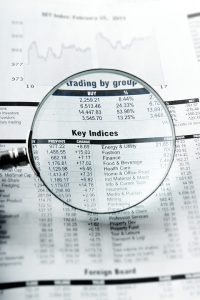Australia has a robust bond market that offers investors a diverse range of opportunities to earn fixed income. The Australian bond market is one of the largest in the Asia-Pacific region, with a total value of approximately A$1.6 trillion. It is an important component of the country’s financial system, providing issuers with a source of funding and investors with a means to diversify their portfolios and manage risk.
Types of Bonds in Australia:
1. Government Bonds:
Government bonds are issued by the Australian government to raise funds for its operations and finance public projects. These bonds are considered to be among the safest investments as they are backed by the full faith and credit of the government. The most commonly traded government bonds in Australia are Treasury Bonds (T-bonds) and Treasury Indexed Bonds (TIBs).
2. Corporate Bonds:
Corporate bonds are issued by companies to finance their operations, expand their business, or refinance existing debt. These bonds offer higher yields than government bonds but come with a greater level of risk. The creditworthiness of the issuer plays a crucial role in determining the yield of corporate bonds. Examples of corporate bonds in Australia include those issued by major banks, mining companies, and telecommunications companies.
3. Municipal Bonds:
Municipal bonds are issued by local governments, such as state and territory governments, to fund infrastructure projects, schools, and hospitals. These bonds are exempt from federal income tax and are often considered to be a tax-efficient investment. Municipal bonds in Australia are usually issued in the form of Infrastructure Bonds or Housing Bonds.
Bond Performance Metrics:
Investors in the Australian bond market typically evaluate the performance of bonds based on several key metrics, including:
1. Yield to Maturity: The yield to maturity (YTM) is the total return an investor can expect to receive if the bond is held until maturity. It takes into account the bond’s coupon rate, price, and time to maturity.
2. Duration: Duration measures the sensitivity of a bond’s price to changes in interest rates. A higher duration implies greater price volatility in response to interest rate movements.
3. Credit Rating: Credit rating agencies assess the creditworthiness of bond issuers and assign ratings based on their ability to repay debt. Higher-rated bonds are considered to be less risky and tend to have lower yields.
Market Analysis and Investment Strategies:
Investors in the Australian bond market often use a combination of fundamental analysis and technical analysis to make investment decisions. Fundamental analysis involves examining the financial health of bond issuers, economic conditions, and market trends. Technical analysis, on the other hand, involves studying historical price data and chart patterns to forecast future price movements.
Investing in bonds requires a clear understanding of the risk-return profile of different types of bonds, as well as the importance of diversification and asset allocation. Government bonds are typically considered to be safe-haven investments, while corporate bonds offer higher potential returns but also carry higher risks. Municipal bonds can provide tax-efficient income for investors in higher tax brackets.
In recent years, the Australian bond market has seen a growing trend towards sustainable and green bonds, which are issued to finance environmentally friendly projects. These bonds have gained popularity among socially responsible investors who seek to support initiatives that promote environmental and social sustainability.
In conclusion, the Australian bond market offers a wide range of investment opportunities for investors seeking fixed income and portfolio diversification. By understanding the different types of bonds available, evaluating performance metrics, and employing sound investment strategies, investors can effectively navigate the bond market and achieve their financial goals. Whether investing in government bonds, corporate bonds, or municipal bonds, the key is to conduct thorough research and seek professional advice to make informed decisions in the dynamic world of bond investing.








